फलन f:{1,2,3}→{a,b,c} तथा g:{a,b,c}→{apple, ball, cat} पर विचार करें जो इस प्रकार परिभाषित है, f(1) = a, f(2) = c, g(a) = apple, g(b) = ball तथा g(c) = cat. दिखाएँ कि f, g तथा gof व्युत्क्रमणीय है। f−1,g−1 तथा (gof)−1 निकालें तथा दिखाएँ कि (gof)−1=f−1og−1.
दिया है f:{1,2,3}→{a,b,c}
तथा g:{(a,b,c}→{apple, ball, cat}
माना कि A = {1,2,3), B = {a,b,c} , C = {apple, ball, cat}
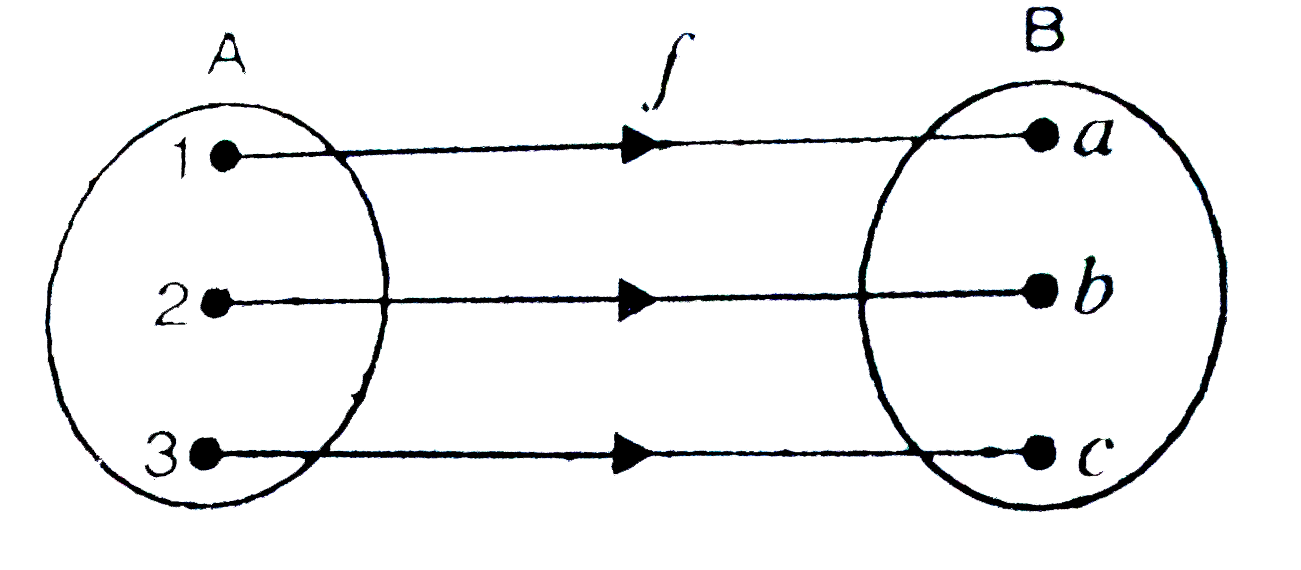
दिया f(1) = a
f(2) = b
f(3) = c
तथा g(a) = apple
g(b) = ball
g(c) = cat
यहाँ gof:A→C इस प्रकार परिभाषित है,
gof(1) = g[f(1)] = g(a) = apple
gof(2) = g[f(2)] = g(b) = ball
gof(3) = g[f(3)] = g(c) = cat
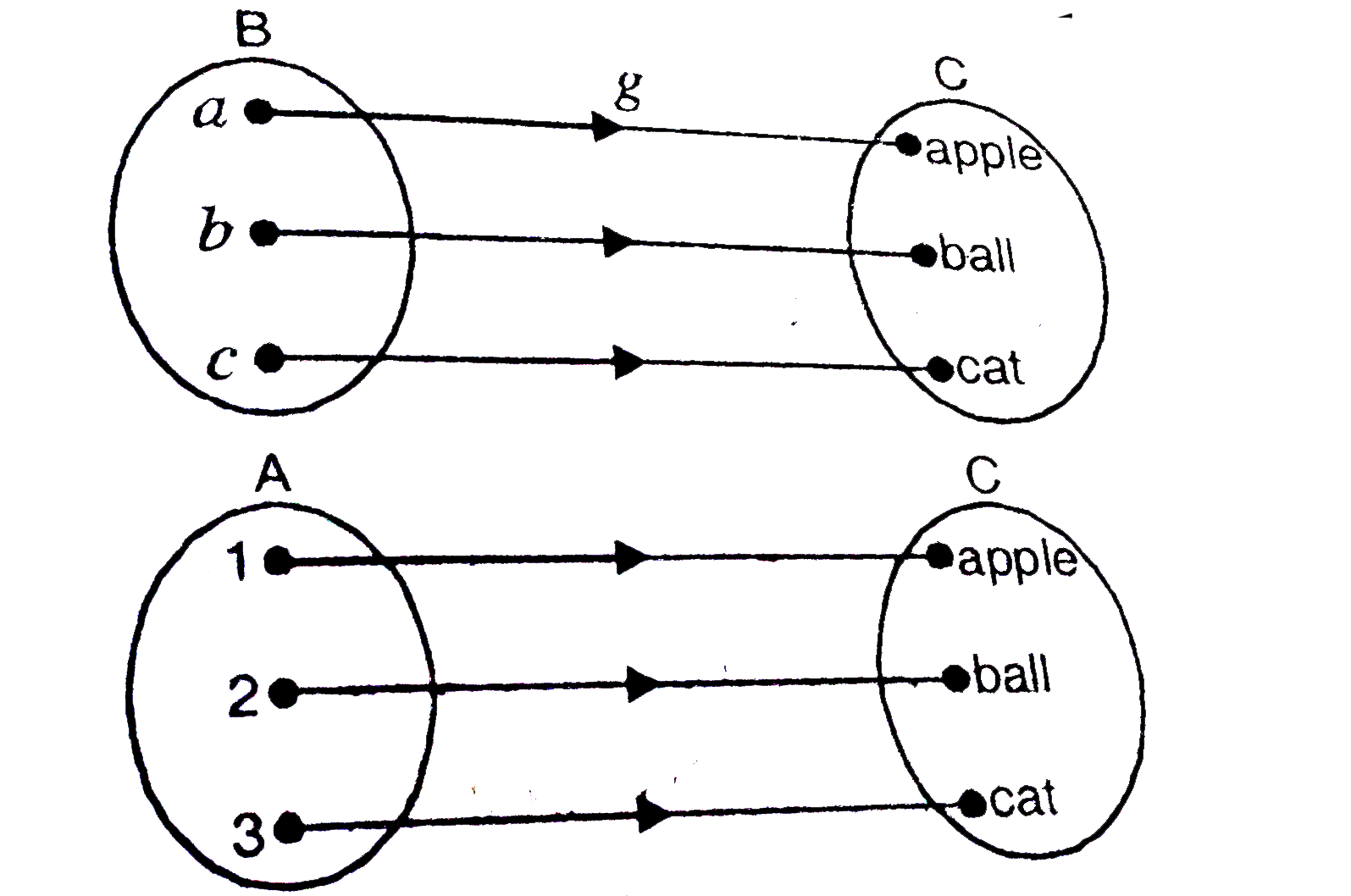
स्पष्टतः f, g, gof एकैकी आच्छादक है और इसलिए f−1,g−1 तथा (gof)−1 का अस्तित्व है।
अब f:B→A इस प्रकार परिभाषित है,
f−1(a)=1,f−1(b)=2,f−1(c)=3
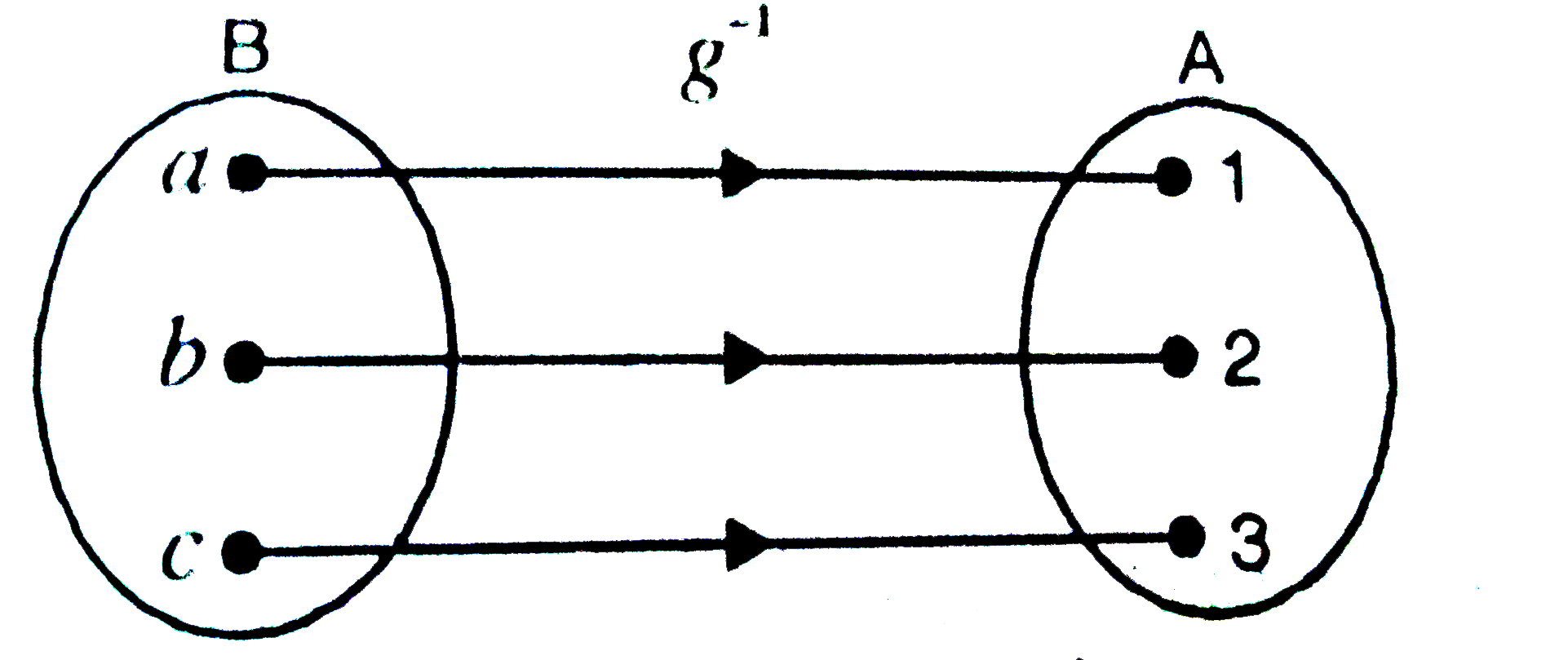
तथा g−1:C→B इस प्रकार परिभाषित है,
g−1 (apple) =a,g−1 (ball) = b and g−1 (cat) = c
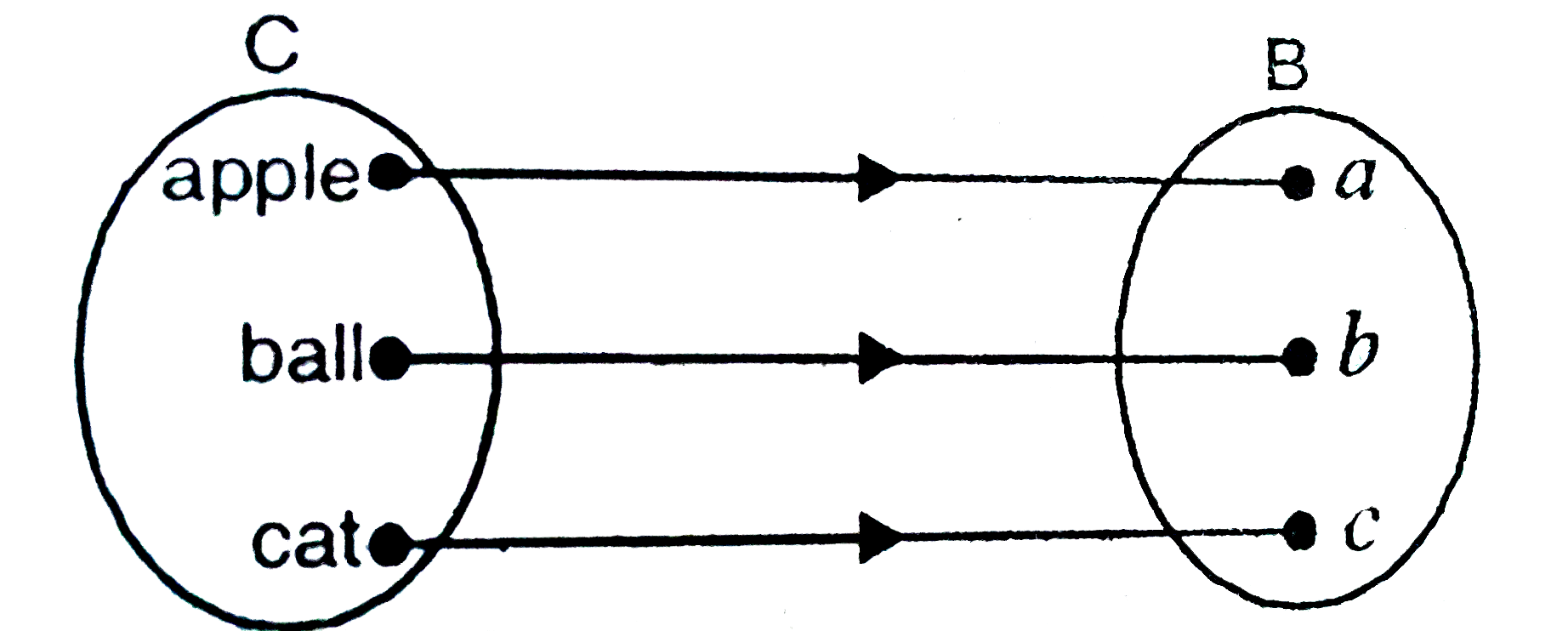
साथ ही (gof)1:C→A इस प्रकार परिभाषित है,
(gof)−1 (apple) =1, (gof)−1 (ball) = 2, (gof)−1 (cat) = 3
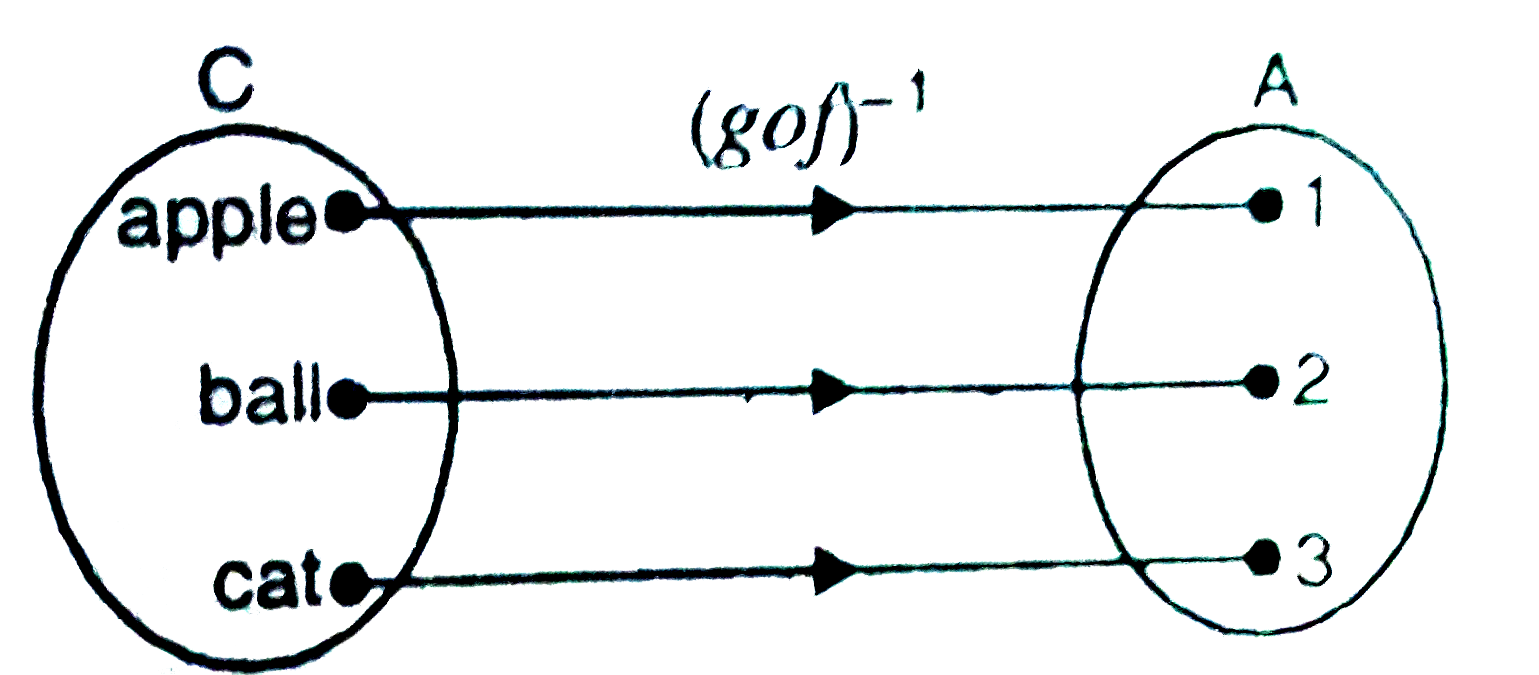
साबित करना है कि (gof)−1=f−1og−1
अब f−1og−1 (apple) = f−1[g−1(apple)]=f−1(a)=1
f−1og−1(ball)=f−1[g−1(ball)]=f−1(b)=2
तथा f−1og−1(cat)=f−1[g−1(cat)]=f−1(c)=3
इस प्रकार f−1og−1:C→A
स्पष्टतः (gof)−1=f−1og−1

f−1,g−1 तथा (gof)−1 का अस्तित्व है, दिखने का दूसरा तरीका :
f−1of(1)=f−1[f(1)]=f−1(a)=1
f−1of(2)=f−1[f(2)]=f−1(b)=2
f−1of(3)=f−1[f(3)]=f−1(c)=3
इस प्रकार f−1ofA→A ताकि f−1of:IA
अतः f−1 का अस्तित्व है अर्थात f व्युत्क्रमणीय है
g−1og:B→B ताकि g−1og=IB
अतः g−1 का अस्तित्व है अर्थात g व्युत्क्रमणीय है तथा (gof)−1o(gof)=IC
अतः (gof)−1 का अस्तित्व है अर्थात gof व्युत्क्रमणीय है।
समान प्रश्न
f : { 1,2,3} → {a, b , c} तथा g : {a , b ,c} → {सेब , गेंद , बिल्ली } f (1) = a , f(2) = b , f (3) = c , g (a) = सेब g (b) = गेंद और g(c) = बिल्ली व्दारा परिभाषित फलनों पर विचार कीजिए । सिद्ध कीजिए कि f , g , gof व्युत्क्रमणीय हैं । f−1,g−1तथा(gof)−1 ज्ञात कीजिए तथा दर्शाइये कि -
(gof)−1=f−1og−1 हैं ।
View Solutionf:{1,2,3}→{a,b,c} तथा g:{a,b,c}→{सेब ,गेंद ,बिल्ली}f(1)=a,f(2)=b,f(3)=c,g(a)= सेब , g(b) = गेंद तथा g( c ) = बिल्ली द्वारा परिभाषित फलनों पर विचार कीजिए कि f,g और gof व्यूत्क्रमणीय है । f−1,g−1 तथा (gof)−1 ज्ञात कीजिए तथा प्रमाणित कीजिए कि (gof)−1=f−1og−1 है ।
View Solutionयदि f तथा g इस प्रकार परिभाषित हैं कि f(x)=x2+2 तथा g(x)=1−1x , तो gof तथा fog ज्ञात कीजिए।
View Solutionयदि f तथा g दो फलन निम्न प्रकार से परिभाषित हैं :
f(x)=xx−1 तथा g(x)=1x−3 जहाँ x∈R तो gof तथा fog ज्ञात कीजिए तथा उनके डोमेन भी लिखिए ।
View Solutionयदि फलन f तथा g निम्न प्रकार परिभाषित हो, तो fog तथा gof ज्ञात कीजिए:
f(x)=logx,g(x)=ex
View Solutionयदि फलन f तथा g निम्न प्रकार परिभाषित हो, तो fog तथा gof ज्ञात कीजिए:
f(x)=x3,g(x)=sinx
View Solutionयदि फलन f तथा g निम्न प्रकार परिभाषित हो, तो fog तथा gof ज्ञात कीजिए:
f(x)=cosx,g(x)=|sinx|
View Solutionयदि फलन f तथा g निम्न प्रकार परिभाषित हो, तो fog तथा gof ज्ञात कीजिए:
f(x)=ex,g(x)=x+2
View SolutionConsider as f(1)=a,f(2)=b,f(3)=c,
g:[a,b,c]→ {apple, ball, cat}
Defined as f(1)=a,f(2)=b,f(3)=c,
g(a) = apple, g(b) = ball, g(c ) = cat
Show that f, g and gof are invertible.
Find f−1,g−1 and (gof)−1 and show that :
(gof)−1=f−1og−1.
View SolutionConsider f:{1,2,3}→{a,b,c}andg:{a,b,c}→{apple, ball, cat} defined as f(1)=a,f(2)=b,f(3)=c,g(a) = apple,g(b)= ball and g (c )= cat. Show that f, g and gof are invertible. Find out f−1,g−1and(gof)−1 and show that (gof)−1=f−1og−1.
View SolutionConsider f:{1,2,3}→{a,b,c}andg:{a,b,c}→{apple, ball, cat} defined as f(1)=a,f(2)=b,f(3)=c,g(a) = apple,g(b)= ball and g (c )= cat. Show that f, g and gof are invertible. Find out f−1,g−1and(gof)−1 and show that (gof)−1=f−1og−1.
View SolutionConsider f:{1,2,3}→{a,b,c}andg:{a,b,c}→{apple, ball, cat} defined as f(1)=a,f(2)=b,f(3)=c,g(a) = apple,g(b)= ball and g (c )= cat. Show that f, g and gof are invertible. Find out f−1,g−1and(gof)−1 and show that (gof)−1=f−1og−1.
View SolutionConsider f:{1,2,3}→{a,b,c}andg:{a,b,c}→{apple, ball, cat} defined as f(1)=a,f(2)=b,f(3)=c,g(a) = apple,g(b)= ball and g (c )= cat. Show that f, g and gof are invertible. Find out f−1,g−1and(gof)−1 and show that (gof)−1=f−1og−1.
View SolutionConsider f:{1,2,3}→{a,b,c}andg:{a,b,c}→{apple, ball, cat} defined as f(1)=a,f(2)=b,f(3)=c,g(a) = apple,g(b)= ball and g (c )= cat. Show that f, g and gof are invertible. Find out f−1,g−1and(gof)−1 and show that (gof)−1=f−1og−1.
View SolutionConsider f:{1, 2, 3}→{a, b, c} and g:{a, b, c}→ {apple, ball, cat} defined as f(1)=a, f(2)=b, f(3)=c, g(a)= apple, g(b)= ball and g(c)= cat. Show that f, g and gof are invertible. Find f−1, g−1 and (gof)−1 and show that (gof)−1=f−1o g−1 .
View Solution

